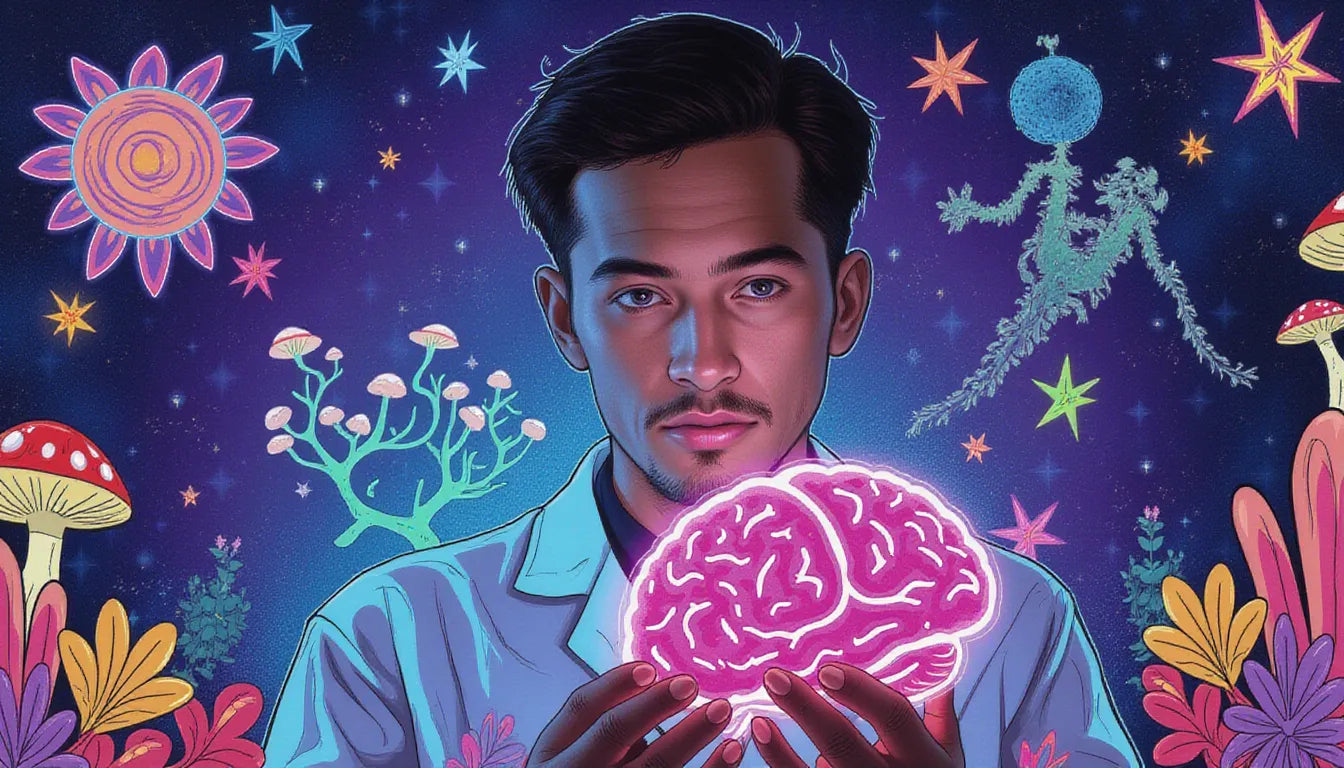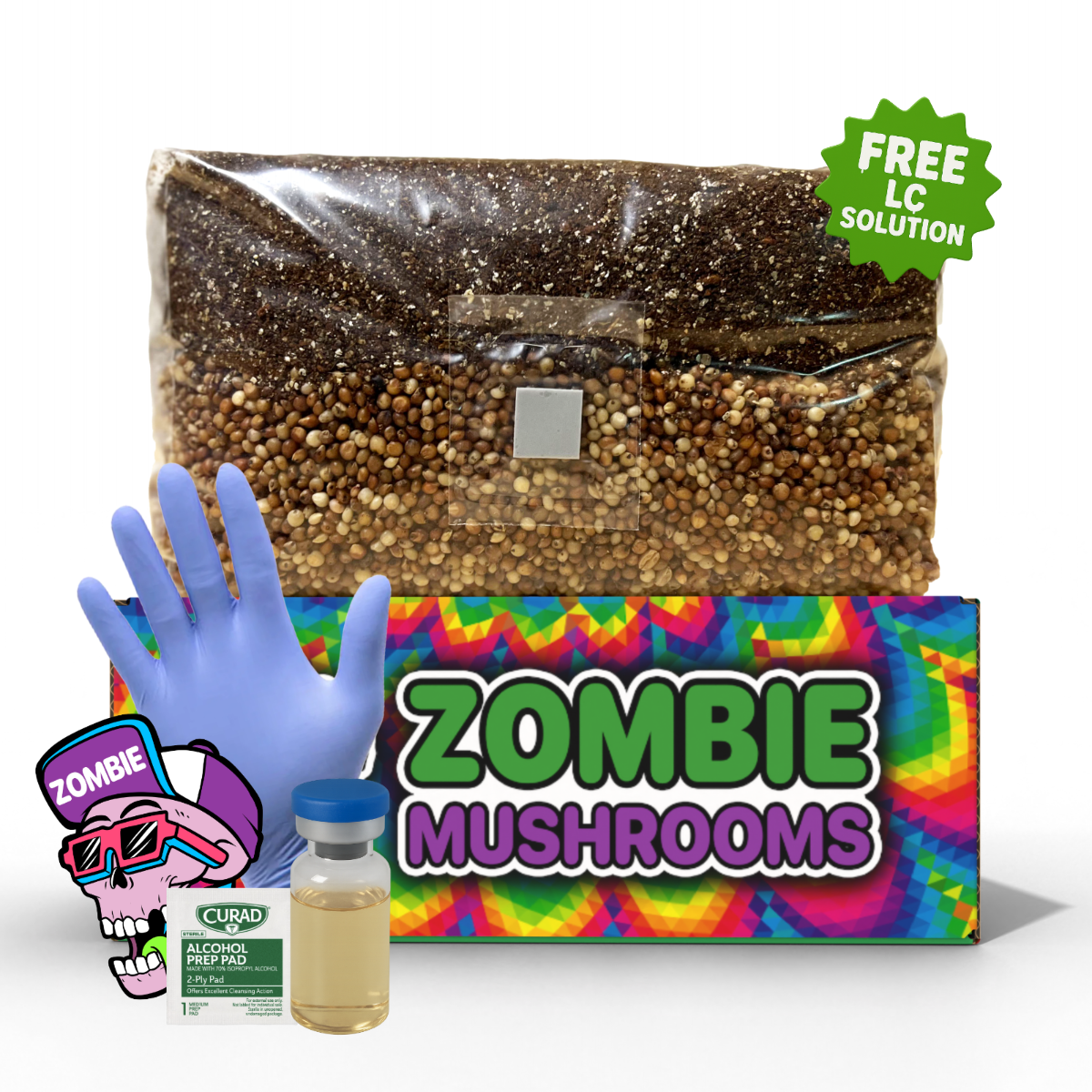⬇️ Prefer to listen instead? ⬇️

- Psychedelics reliably increase divergent thinking and cognitive flexibility—core traits of creativity.
- Kary Mullis credited LSD-enhanced thinking for helping him invent PCR, which transformed biotechnology.
- Bruce Damer’s ayahuasca experience helped him reimagine a scientific origin-of-life theory, later validated by empirical findings.
- In the 1966 Fadiman study, professionals reported merging with complex problems after psychedelic sessions, leading to breakthroughs.
- MINDS project, launched in 2025, aims to systematically research how psychedelics encourage innovative solutions.
From Silicon Valley labs to Peruvian jungles, the idea that psychedelics might help people solve problems is catching fire again. Long viewed as tools for therapy or counterculture escape, substances like LSD, psilocybin, and ayahuasca are increasingly studied for their role in fueling creativity, innovation, and insight. But can altered states actually help us tackle society’s biggest problems? With the psychedelic renaissance well underway, scientists and thinkers are revisiting what it means to be a “solutioneer”—someone using visionary thinking, sometimes psychedelic-driven, to confront complex challenges, with some even turning to liquid culture as part of their deeper exploration of mushrooms.

How Psychedelics Spark Creative Cognition
Modern neuroscience is beginning to show what many psychedelic users have claimed for decades: these substances can boost creativity. A key part in this process lies in psychedelics’ effect on the brain’s default mode network (DMN)—a hub linked with thinking about oneself, worrying, and stuck ways of thinking. When people take classic psychedelics such as psilocybin or LSD, activity in the DMN subsides. This results in less ego focus and more connection between different brain regions that do not typically communicate as freely.
In this changed brain setup, the mind becomes more flexible, less rigid. Studies confirm that psychedelics enhance divergent thinking—the ability to come up with many different solutions to one problem. They also help with convergent thinking under the right conditions, allowing people to focus these ideas into single understandings. Creative professionals, scientists, and entrepreneurs have described vivid inspiration, spotting patterns, and emotional clarity during psychedelic states.
Perhaps just as important, psychedelics boost openness to experience—a personality trait closely associated with creativity, innovation, and working across different idea areas. When the boundaries of the self disappear, whole new fields of thought may emerge.
Metaphorical Processing and Systems Thinking
Another way psychedelics help creativity is through thinking with lots of metaphors. Users often describe things as visual, symbolic trips—seeing problems as places or experiencing concepts as mixed sensory inputs. These metaphors aren’t shallow. They may allow the brain to connect ideas in new ways, enabling what neuroscientists call “cognitive flexibility.”
That flexibility is critical when facing wicked problems—issues like severe weather, social inequality, or technological risk that have many causes and are always changing. Psychedelics may allow for thinking that doesn't follow a straight line, which better matches the complexity of such challenges.

Bruce Damer and the Hot Spring Theory of Life
Astrobiologist and computer scientist Bruce Damer is a rare mix—part empirical scientist, part inner researcher. For years, Damer was not satisfied with the main theory that life began in deep-sea hydrothermal vents. Something didn't quite sit right. Then, during an ayahuasca ceremony in the early 2000s, he had a major insight about existence.
Damer reported becoming one with a simple early cell in a warm, bubbling hot spring, experiencing early Earth not just in his head, but feeling it in his body. He felt the water levels going up and down, the drying layer of fatty acids, the first beginnings of molecules making copies of themselves. This was not a hallucination to him—it was a plan.
After the ceremony, Damer turned this vision into his Hot Spring Hypothesis, saying that life began not in deep oceans but in fresh, land-based pools that went back and forth between wet and dry phases. These small places offered more believable conditions for RNA formation and lipid layers—the building blocks of cellular life.
With fellow scientists, Damer tested the hypothesis through field experiments in ancient places in New Zealand and computational models. And then, later geological findings—like ancient zircon crystals showing surface water environments several hundred million years earlier than thought—gave real-world support to his vision (Briggs, 2024).
His experience shows how psychedelics and creativity, when anchored in scientific rigor, can change the story of life itself.

Kary Mullis: PCR and Molecular Dancing
Few psychedelic stories are as well-known—or as impactful—as that of Kary Mullis. A biochemist known for his unusual brilliance, Mullis won a Nobel Prize in Chemistry in 1993 for inventing the polymerase chain reaction (PCR), a technique that completely changed how DNA is copied.
But what led to that idea?
Mullis often talked about the unique way of thinking that created PCR. He described moments of seeing molecule interactions in visual, even physical terms—DNA strands glowing, enzymes dancing, the process unfolding before him like a complex dance. He openly said LSD was a tool that taught him how to think differently, sometimes talking to molecules or visualizing complex biological processes with new clarity.
“I doubt I would have invented PCR if I hadn’t taken LSD,” he noted.
This isn’t just a story about influence—it represents a deeper connection between mental freedom and scientific use. Mullis's psychedelic-enhanced view gave him access to perspectives not available through linear thought alone—an example of how psychedelics for problem solving can lead to technologies with global importance.

Einstein and the Mental Mechanics of Psychedelic Thinking
Albert Einstein likely never took psychedelics, but his mental process strangely matches psychedelic thinking. Einstein famously used what he called “thought experiments”—seeing himself riding on a beam of light or falling through space in an elevator shaft to figure out the principles of relativity.
These imaginative exercises show an essential trait shared by psychedelics and problem solving: seeing things from different points of view. Instead of just looking at a concept from afar, the thinker enters into the problem as if they are part of it. This way of thinking, where you feel like you are in the experience, doesn’t just simulate ideas—it becomes something lived, full of emotion and sensation.
Interestingly, this type of thinking based on experience is commonly reported during psychedelic trips. Users don’t just think about problems—they feel themselves inside of them, dealing with concepts like they are terrain. It suggests that psychedelics can act as mental training for Einsteinian thinking.

Revisiting the 1966 Fadiman Study on Psychedelic Insight
In 1966, psychologists Willis Harman and James Fadiman did an important study looking at the effects of psychedelics on professionals facing complex design or engineering problems. Participants included mathematicians, architects, physicists, and engineers. Each was told to focus on a specific, real-world problem—anything from circuit board design to mathematical rules.
After taking mescaline, under careful supervision and in supportive conditions, many reported big changes in how they approached things. One person described “becoming the problem”—a shift so deep that the line between problem and solver disappeared (Harman & Fadiman, 1966). Another said they had wandered through the inside structure of the human eye by metaphorically “climbing down” their retina.
The study showed that psychedelics could help not just with thinking outside the box but with thinking from inside the experience. Solutions created under influence were later checked by others in their field and found to be practical, creative, and able to be put to use—showing that the link between psychedelics and creativity can go beyond a sudden idea into actually doing something.
MINDS: A New Era for Psychedelics and Innovation
Fast forward to the 21st century, and the conversation has become more serious. The MINDS Project (Center for Multidisciplinary Investigation into Novel Discoveries and Solutions), started in 2025, marks a turning point in organized psychedelics research—not just for therapy, but for innovation.
Working with places like the University of Texas-Austin's psychedelic research program and private health organization Ways2Well, MINDS aims to confirm methods that make psychedelic experiences best for creative problem solving. Researchers study how things like dosage, set (the user’s mindset), setting (the external environment), and getting ready psychologically affect results related to creative thinking and solution generation.
Their studies could help figure out the best ways for future uses in industry, schools, and coming up with new rules. Imagine engineers taking small doses before brainstorming ideas for energy systems that don't harm the planet, or social workers using guided psilocybin sessions to rethink ways for community well-being.

Big Problems Require Bigger Thinking
The 21st century brings problems that don't fit traditional logic. Severe weather issues. Artificial superintelligence. Global inequality systems too complicated to understand in a simple line.
These problems aren't puzzles to solve—they're situations to deal with. They require a way of thinking that looks at whole systems, is intuitive, understands feelings, and uses metaphors. In short, they require a mindset that psychedelics often encourage.
Steve Jobs showed this when he said taking LSD was one of the most important experiences of his life. While not directly named in any patent, his openness to design based on intuition, working together without strict bosses, and seeing products as complete systems was likely shaped by psychedelic perception.
Psychedelics may not build the solutions—but they might change the minds that do.
From Pause to Renaissance: The Psychedelic Research Timeline
Psychedelic science once had a lot of promise. Then, in the late 1960s, politics stopped progress. California's then-governor ordered a complete halt to studies like those of psychiatrist Humphrey Osmond, putting decades of research on hold.
Now, the field is coming back strongly. Johns Hopkins University set up a specific Center for Psychedelic and Consciousness Research. The Multidisciplinary Association for Psychedelic Studies (MAPS) recently finished Phase 3 trials showing that MDMA-assisted therapy significantly reduces PTSD symptoms in people getting clinical treatment (MAPS, 2023).
These steps by institutions give legitimacy to psychedelic science—and open ways to study how it can serve not just health, but human advancement.

Not Just Healing—Advancing Humanity?
“For us, the burden and the duty felt undeniable,” Bruce Damer said in an interview regarding the responsibility of using psychedelics not just for personal wellness, but for caring for the planet.
Psychedelics and creativity can feed into areas beyond medicine. These include making ethical technology, farming that repairs the land, artistic innovation, and solving global problems. As the world faces many difficult choices, the ability for thinking that combines different fields, uses intuition, is emotionally wise, and is new becomes even more crucial.

Citizen Science and DIY Curiosity
Not every innovator wears a lab coat. As interest in psychedelics grows, citizen science has become a meaningful area. Growing legal mushrooms—especially types that don't cause altered states or are allowed in specific places—lets enthusiasts interact with fungi with both curiosity and care.
Many hobbyists use platforms like Zombie Mushrooms to find ethical mushroom growing supplies, try things within legal rules, and join educational programs. This system built from the ground up helps the public understand more, while also making insights more accessible, which used to be kept only in laboratories.
When guided by research, legality, and ethics, growing at home becomes a civic act full of wonder.

Seeing with Mushroom Eyes
Psychedelics may not give us ready solutions to global crises. But they can open our eyes—sometimes literally—to new ways of seeing. In a world that often rewards focusing on small things and making small changes, they invite a way of thinking that looks at the whole picture, brings things together, is empathetic, and is aware.
From DNA microstructures to complex living systems, from retinal trips to origin-of-life visions, psychedelics and problem solving increasingly connect. They may not solve our challenges themselves, but they may help a new generation of solutioneers rise to meet them.
If you're looking for new ways to think, grow, and contribute, your path might start with cultivating mushrooms—and expand into cultivating insight.
Ready to look into your own creative frontier? Check out our guide on how to grow legal mushroom species at home and browse Zombie Mushrooms’ full range of mycology supplies and mushroom grow kits.
Citations
- Harman, W., & Fadiman, J. (1966). Psychedelic Agents in Creative Problem-Solving: A Pilot Study. Psychological Reports, 19(1), 211–227. https://doi.org/10.2466/pr0.1966.19.1.211
- MAPS Public Benefit Corporation. (2023). Submission to FDA for MDMA-assisted therapy. https://maps.org/mdma/



